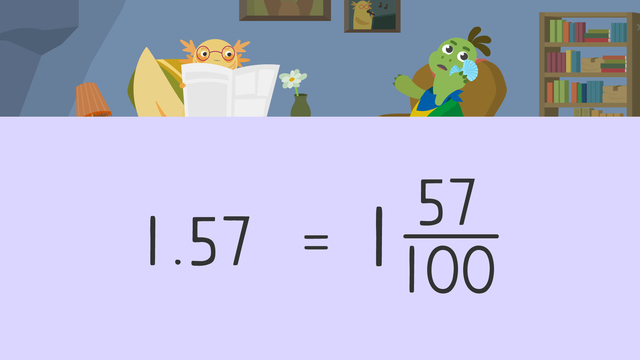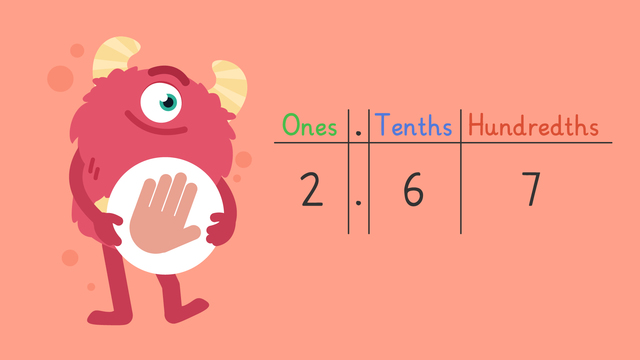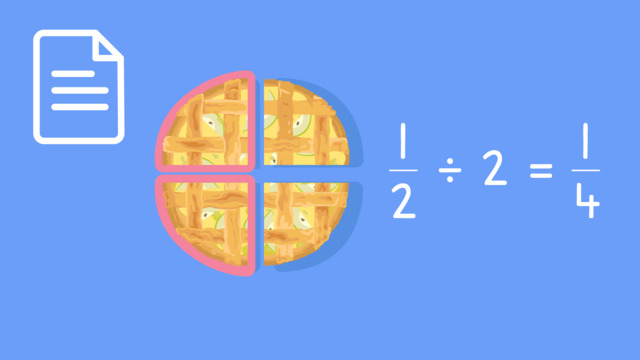Subtracting Decimals
- Subtracting Decimals Using Place Value – Introduction
- Subtracting Decimals Using Place Value – Rules
- How to Align Decimal Places


Basics on the topic Subtracting Decimals
Subtracting Decimals Using Place Value – Introduction
Subtracting decimals might seem daunting at first, but with a solid understanding of place value, it becomes a simple task. In this video and text, we'll explore the essentials of subtracting decimals, ensuring you are equipped to handle calculations accurately in everyday scenarios, such as financial transactions or measuring ingredients for a recipe.
Subtracting Decimals Using Place Value – Rules
Subtracting decimals follows the same fundamental rules as subtracting whole numbers. However, decimal subtraction requires an additional step of aligning the decimal points to ensure accuracy.
How to Align Decimal Places
Aligning decimal numbers is critical when subtracting. You must ensure that the decimal points are vertically aligned before carrying out the subtraction. This helps you maintain the correct place value for each digit in the numbers involved.
Subtracting Decimals Using Place Value – Example
If we have to subtract 2.5 from 3.25, we first make sure the numbers have the same number of decimal places by rewriting 2.5 as 2.50. We can then perform the subtraction:
Subtract each column as you would for whole numbers, starting from the rightmost digit.
Regrouping in Decimal Subtraction – Guided Practice
Let's subtract 2.7 from 3.25. You'll notice we need to regroup because we can't subtract 7 tenths from 2 tenths.
Practicing Decimal Subtraction – Application
Let's solve a real-world problem. You have £5.25 and buy a toy for £2.30. How much money do you have left?
Practice some on your own!
Common Mistakes to Avoid
A frequent error in decimal subtraction is misaligning the decimal points, which can lead to incorrect place value calculations. Always double-check that your decimal points are properly aligned before subtracting.
Subtracting Decimals using Place Value – Summary
Key Learnings from this Text:
- Knowing how to subtract decimals can be very useful in everyday life for example when working out change.
- When subtracting decimals, make sure both numbers have the same number of decimal places and always align the decimal point.
- When subtracting, regroup if needed.
Subtracting Decimals using Place Value – Frequently Asked Questions
Transcript Subtracting Decimals
Luis has finished his latest project: a mini electric race car! The distance travelled must be monitored to make sure it doesn't run out of battery. To do this, Luis can use subtracting decimals using place value. A decimal is a way of representing a whole number and a fractional part. Our knowledge of place value can help us when subtracting decimals. Here is the decimal point and the values to the right represent the fractional parts; the tenths and hundredths. So, how do we subtract decimals? Let's use the example five point two minus three point one five. First, align the numbers by place value. Then, subtract just like you would with whole numbers, starting from the rightmost place value. With decimal values, you will sometimes find that there is no digit in a place value, like here in the hundredths column. When this happens, always assume it to be zero, and write a zero as a placeholder. This ensures your calculations are accurate. In the hundredths column, we cannot subtract five from zero, so take one from the column to the left. Now the hundredths place is ten, so ten minus five is five. Now we have a one in the tenths column and when we subtract we have zero left. Remember to add the decimal place before we move on. Now in the whole numbers, we continue subtracting in the ones column and get two. Five point two minus three point one five equals two point zero five. Let's help calculate the range left in Luis' electric car after each turn. It starts with a range of twenty five point three three feet. Luis will first drive it for five point three two feet. How much range is left? Pause the video to work on the problem, and press play when you are ready to see the solution. First, you align the place values. In the hundredths place, three minus two is one. In the tenths place, three minus three is zero. Remember, always add the decimal point in the correct place. In the ones place, five subtract five is zero, and two subtract zero is two in the tens place. Luis' car still has a range of twenty point zero one feet. Next, Luis drives the electric race car for eighteen point two feet. How much range is left? Pause the video to work on the problem, and press play when you are ready to see the solution. First, you align the place values. Add a zero here as a placeholder. In the hundredths place, one minus zero is one. We need to regroup in the tenths place since two cannot be taken from zero, and since there is a zero in the ones place as well, we'll need to start our regrouping from the tens place. Ten minus two is eight. Remember to always add the decimal point. In the ones place, nine minus eight is one, and in the tens place, one minus one is zero. Luis' car has a range of one point eight one feet left. While Luis continues driving his electric car, let's wrap it up. To summarise, when subtracting decimals, always align the place values, and solve from right to left. Always make sure the decimal point is placed in the correct column. Subtracting decimals is a useful skill when it comes to calculating differences in money, measurements or distance. It looks like Luis' final problem is getting back to the charging dock!
 Do you want to learn faster and more easily?
Do you want to learn faster and more easily?













